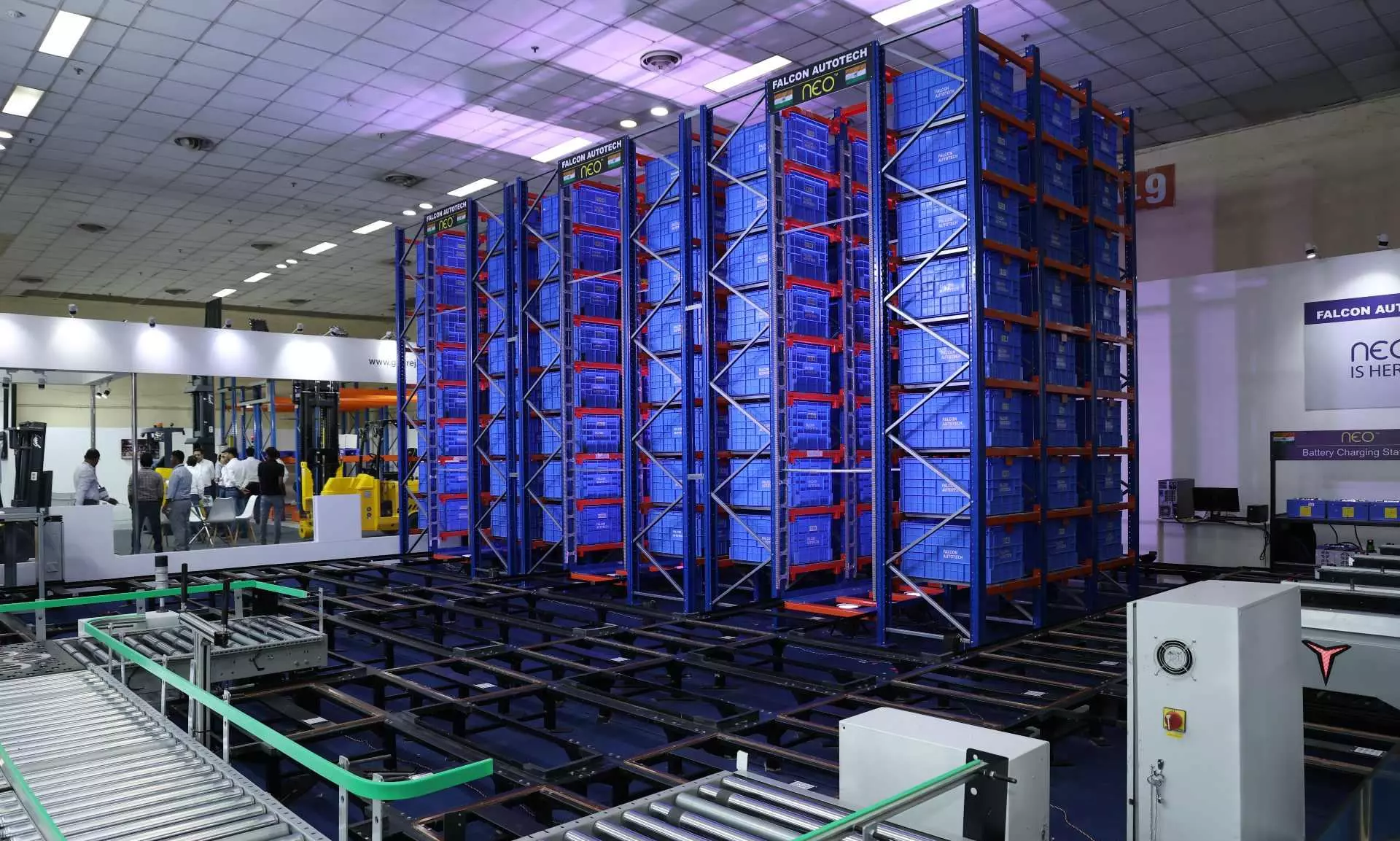Automation revolutionizing intra-logistics, warehouse operations

In the past decade, the economic landscape has witnessed a pivotal shift, with a greater emphasis on enhancing consumer experiences rather than just service provision. This shift in consumer behaviour has imposed considerable pressure on the warehousing and storage industry, necessitating improvements in quality and productivity. Transportation and warehousing managers are increasingly turning to autonomous systems to automate their intra-logistics operations to address this challenge. The logistics sector now prioritizes automation-driven intra-logistics systems that leverage cutting-edge technology to achieve superior operational performance and management.
Changing warehouse scenarios
Automation has emerged as a game-changer in intra-logistics. Traditional intra-logistics operations rely on manual processes, resulting in suboptimal decision-making and employee performance. Companies can significantly enhance productivity and accuracy by automating repetitive tasks such as sorting, picking, and packing. Automated systems, including conveyor belts and robotic arms, facilitate seamless material flow, leading to quicker order fulfilment and reduced lead times. Furthermore, automation substantially reduces the risk of workplace injuries, creating safer working environments for employees.
Benefits of technology incorporation and automation-driven operations
Harnessing automation's power in warehouses unlocks a multitude of benefits, facilitating seamless operations and reducing the likelihood of human errors. Here are some of the key advantages:
1. Enabling operational excellence: Modern warehouse operations require flexibility and modularity. Innovative intra-logistics systems seamlessly integrate with existing technologies like automated guided vehicles, conveyors, and 3D-ASRS, enabling rapid adaptation to fluctuating volumes. Real-time communication and collaboration among cyber-physical systems enhance reliability, efficiency, and planning, improving throughput and reducing costs. Predictive maintenance capabilities minimize disruptions and optimize resource utilization, leading to substantial cost savings.
2. Enabling autonomous operations: To cope with the surge in e-commerce volumes, warehouses are embracing autonomous operations to handle repetitive and non-value-added tasks. Smart intra-logistics systems can make decentralized decisions, execute autonomous actions, and reduce the need for human intervention. Technologies such as smart conveyors and collaborative robots optimize package handling and reduce wastage, while predictive maintenance enhances asset availability and performance.
3. Enhancing communication and accountability: Smart intra-logistics systems promote clear, uniform communication and enhanced accountability among warehouse stakeholders. They integrate data from multiple sources, creating homogeneous databases that foster collaboration between different business units. Additionally, these systems enhance safety and security by using edge-cloud computing technology to securely store and exchange data, mitigating the risk of cyberattacks.
4. Enhancing employee performance: Smart intra-logistics systems leverage IoT gateways and real-time data exchange to empower warehouse workers with contextually relevant information. This enhanced data allows employees to make dynamic decisions and optimize warehouse operations efficiently. These systems identify bottlenecks and critical paths by providing a digital representation of complex warehouse setups, simplifying KPI-based performance metrics. Furthermore, smart intra-logistics drive operational agility and scalability and equip the workforce with the skills and knowledge required to boost overall performance and growth.
5. Improving safety: Safety is paramount in the logistics industry, and smart intra-logistics can enhance it through collision avoidance systems, autonomous machines, and real-time environmental monitoring. Autonomous Mobile Robots (AMRs) can handle heavy loads, reducing human involvement in hazardous tasks and improving warehouse safety.
6. Meeting customer expectations: Changing customer expectations necessitate flexible warehouse operations capable of handling customized products and responding quickly to market trends. Smart intra-logistics technologies, such as AI-enabled AGVs and 3D-ASRSs, enable rapid deployment and response to varying volume fluctuations. Additionally, locally controlled smart conveyor systems and robotic arms support mass customization, efficiently processing tailor-made products without disrupting warehouse operations.
7. Enhancing sustainability performance: Smart intra-logistics systems significantly contribute to sustainability efforts by reducing emissions, optimizing space utilization, and promoting resource savings. Autonomized operations, predictive maintenance, and real-time data analytics decrease energy consumption and carbon emissions. The ability to map work patterns and adjust facility layouts strategically ensures optimal space utilization and reduced wastage. End-to-end visibility on sustainability performance further supports warehouses in mitigating environmental impacts.
The way forward
Intra-logistics is undergoing a significant transformation driven by technology and automation. The integration of intelligent management solutions and automated systems has revolutionized warehouses and distribution centers, greatly enhancing efficiency and productivity. The Warehouse Automation Market, valued at USD 19.88 billion in 2022, is projected to reach USD 54.60 billion by 2030. The increasing demand for automated warehousing solutions, fueled by the growth of e-commerce and online retail, is a key driver of this expansion. Solutions like sortation systems, smart conveyors, 3D ASRS play a vital role in increasing productivity, accuracy, and real-time inventory management, contributing significantly to the growth of warehouse automation.
The views and opinions expressed in this article are those of the author and do not necessarily reflect the views of Indian Transport & Logistics News.

Sandeep Bansal
He is the chief business officer of intra-logistics & warehouse automation solutions provider Falcon Autotech.


